October 14, 2015
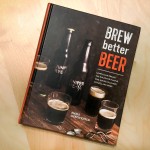
Not Just Another Homebrew Book
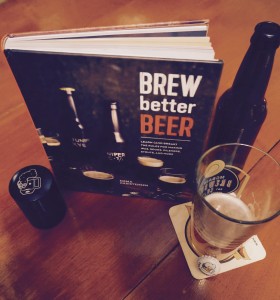 It seem like every time I look there is another home brew book available explaining how to brew beer. Many of these books are simply a re-hash of the many brewing styles and methods that home brewers can use to create our favorite alcoholic beverages. Granted it’s hard to really find new content to write a home brew book about and keep it fresh when the basic process for brewing has remained the same for centuries. Not to mention that there are only four basic ingredients used in the process so finding new ways of presenting this information can be a daunting task. Some books get so caught up in the technical aspects and science of brewing that they read like the dry text books from a high school chemistry class and by the end of the first chapter you’re ready to scratch your eyes out. For the new brewer the only thing these books do is raise the anxiety level and make them reach for the strongest beer they have in the fridge to help them forget any thought of brewing their own beer. These books aren’t necessarily bad, it’s just that they tend to be geared toward someone who is more technical or has a higher understanding of the science of brewing. Lets face it most of us get into homebrewing because of the “cool factor” and the opportunity to create something that is not (yet) the usual and have fun doing it.
It seem like every time I look there is another home brew book available explaining how to brew beer. Many of these books are simply a re-hash of the many brewing styles and methods that home brewers can use to create our favorite alcoholic beverages. Granted it’s hard to really find new content to write a home brew book about and keep it fresh when the basic process for brewing has remained the same for centuries. Not to mention that there are only four basic ingredients used in the process so finding new ways of presenting this information can be a daunting task. Some books get so caught up in the technical aspects and science of brewing that they read like the dry text books from a high school chemistry class and by the end of the first chapter you’re ready to scratch your eyes out. For the new brewer the only thing these books do is raise the anxiety level and make them reach for the strongest beer they have in the fridge to help them forget any thought of brewing their own beer. These books aren’t necessarily bad, it’s just that they tend to be geared toward someone who is more technical or has a higher understanding of the science of brewing. Lets face it most of us get into homebrewing because of the “cool factor” and the opportunity to create something that is not (yet) the usual and have fun doing it.
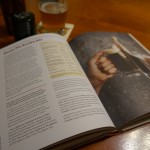 So where does Emma Christensen’s book Brew Better Beer fall into the mash of home brew literature? Well, exactly where it’s needed most, at the beginning. Brew Better Beer isn’t just about making brewers brew better beer. It’s about making sure the fundamentals of brewing are clearly understood, which for the novice brewer is essential for enjoying the hobby and ensuring that it continues to be enjoyed for years to come.
So where does Emma Christensen’s book Brew Better Beer fall into the mash of home brew literature? Well, exactly where it’s needed most, at the beginning. Brew Better Beer isn’t just about making brewers brew better beer. It’s about making sure the fundamentals of brewing are clearly understood, which for the novice brewer is essential for enjoying the hobby and ensuring that it continues to be enjoyed for years to come.
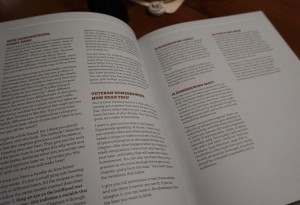 The book is laid out in a logical and easy to understand order. Starting with the first chapter “Know your Ingredients” which covers the foundations of beer, grains, hops, water and yeast. This isn’t an in depth technical look at these ingredients but gives you more of a basic understanding of what they are and how they work together to create a beer. The second and third chapters move you towards building your first home brewing kit and then brewing your first beer all while keeping the learning curve low. Not only is the progression logical, but the concepts and verbiage make it easy to understand and helps to keep the reader engaged in the topics. Once you’ve read these first three chapters the rest of the book tempts you with all the possibilities that your new found knowledge and this hobby has to offer with over 60 different recipes including Amarillo SMaSH, Double Take Black IPA, Smoky Chipotle Porter and Finnish Juniper Rye Sahti Ale that all can be brewed using the concepts that are covered in the first few chapters.
The book is laid out in a logical and easy to understand order. Starting with the first chapter “Know your Ingredients” which covers the foundations of beer, grains, hops, water and yeast. This isn’t an in depth technical look at these ingredients but gives you more of a basic understanding of what they are and how they work together to create a beer. The second and third chapters move you towards building your first home brewing kit and then brewing your first beer all while keeping the learning curve low. Not only is the progression logical, but the concepts and verbiage make it easy to understand and helps to keep the reader engaged in the topics. Once you’ve read these first three chapters the rest of the book tempts you with all the possibilities that your new found knowledge and this hobby has to offer with over 60 different recipes including Amarillo SMaSH, Double Take Black IPA, Smoky Chipotle Porter and Finnish Juniper Rye Sahti Ale that all can be brewed using the concepts that are covered in the first few chapters.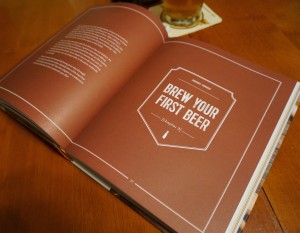
The variety of recipes is pretty wide and covers anything from fairly basic Pale Ales and IPAs to Lagers, Sours, Ciders and Braggots. In addition to the base recipes she also dips into adding adjuncts such as fruit, spices and herbs that can take brewing to another level. This one book could keep you busy for years brewing it’s recipes and it’s variations. All recipes are available in two sizes, 1 gallon and 5 gallons. The 1 gallon batch size is helpful anyone that wants to start brewing but might not have the space or resources to brew a larger batch of beer.
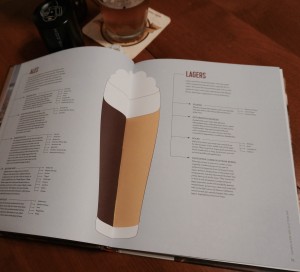 At the end of each chapter Emma has included “bonus” information giving you tips and tricks to make your brewing just a little easier including a diagram showing a break down of Ales and Lagers or “Homebrewing Checklists” and “Ten Small Habits That Will Make You A Better Brewer”. There really is some great information in these sections and I have actually started putting a few of them into practice.
At the end of each chapter Emma has included “bonus” information giving you tips and tricks to make your brewing just a little easier including a diagram showing a break down of Ales and Lagers or “Homebrewing Checklists” and “Ten Small Habits That Will Make You A Better Brewer”. There really is some great information in these sections and I have actually started putting a few of them into practice.
Not only is the book informative and easy to read it is also beautifully illustrated. with great photography of the beer, ingredients and recipes by Katie Newburn. All of this is inside a hard bound book cover that makes it look good on the coffee table or in your brewhouse or next to your other homebrew and beer books in your library.
I actually used this book and a recipe from it to help someone in my home brew club make the move from extract brewing to all grain brewing. Adam chose a recipe from the book, “A Very Good Wheat Beer (Hefewiezen)” and we shopped for the ingredients together. While brewing and waiting for the mash and boil, Adam just couldn’t put the book down. He said it was one of the few books that didn’t overwhelm him with all the technical crap and made it (all grain) easy to understand. He actually went out and bought the book after we finished brewing.
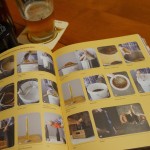 Pros:
Pros:
- Clear, concise information without getting overly technical.
- A lot of recipes that are easy to follow and produce great results.
- Bonus information giving you tips and tricks to make your brewing just a little better/easier.
- Beautifully illustrated
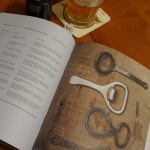 Cons:
Cons:
I am most likely being a little nit picky here but the only recipe size options in this book are 1 gallon and 5 gallon batches. I really think that a sweet spot for those restricted by space to brew such as apartment dwellers is the 2 to 2.5 gallon batch size. This size gives you roughly a case of beer (20 to 24 – 12 oz bottles) which is a good return for the effort.
Specs:
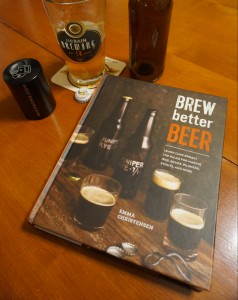 Pages: 233 (Hardcover)
Pages: 233 (Hardcover)- Chapters: 15 plus Introduction, Glossary, Recommended Resources, Acknowledgements, About Author and Index
- Recipes: 64 recipes plus variations on most of the recipes.
- Available Formats: Hardcover and Kindle
- Full Title: Brew Better Beer: Learn (and break) The Rules for Making IPAs, Sours, Pilsners, Stouts and More.

